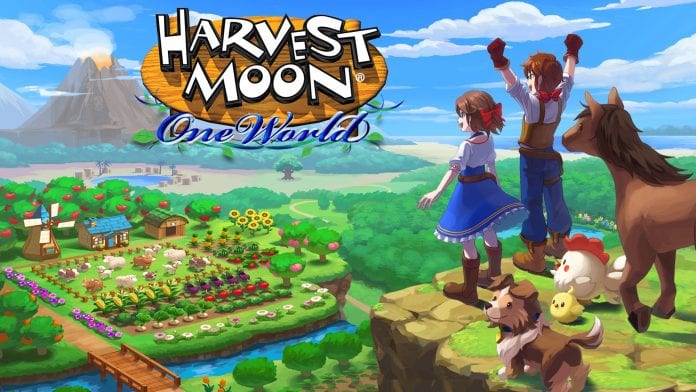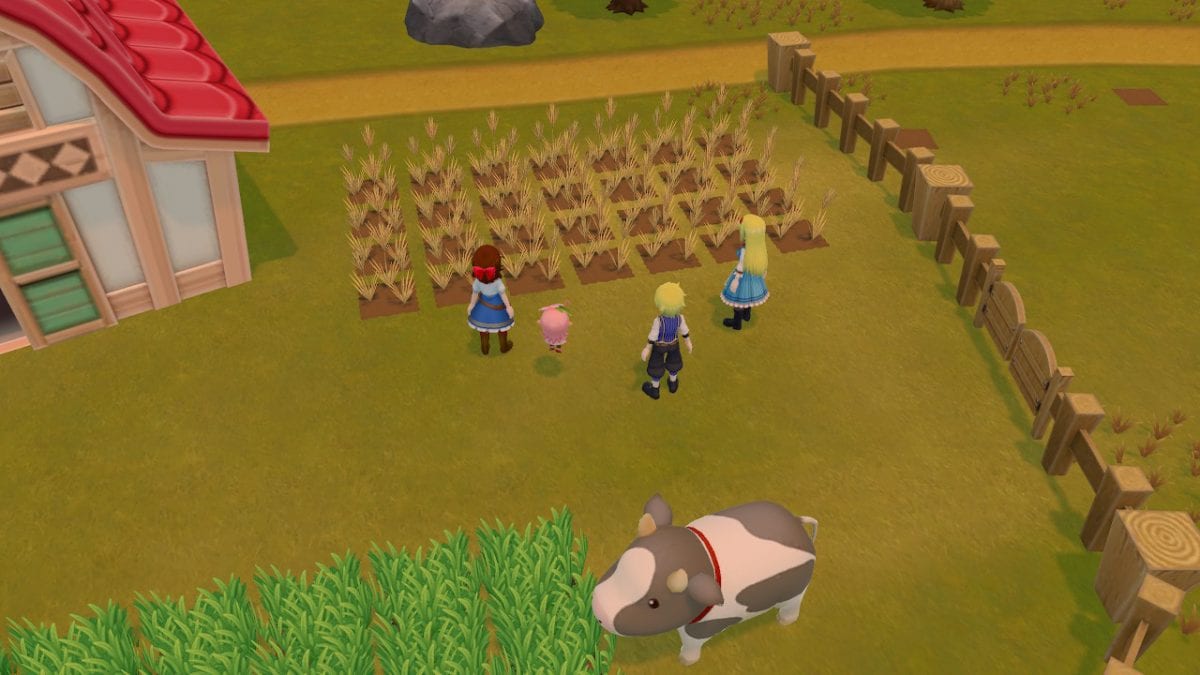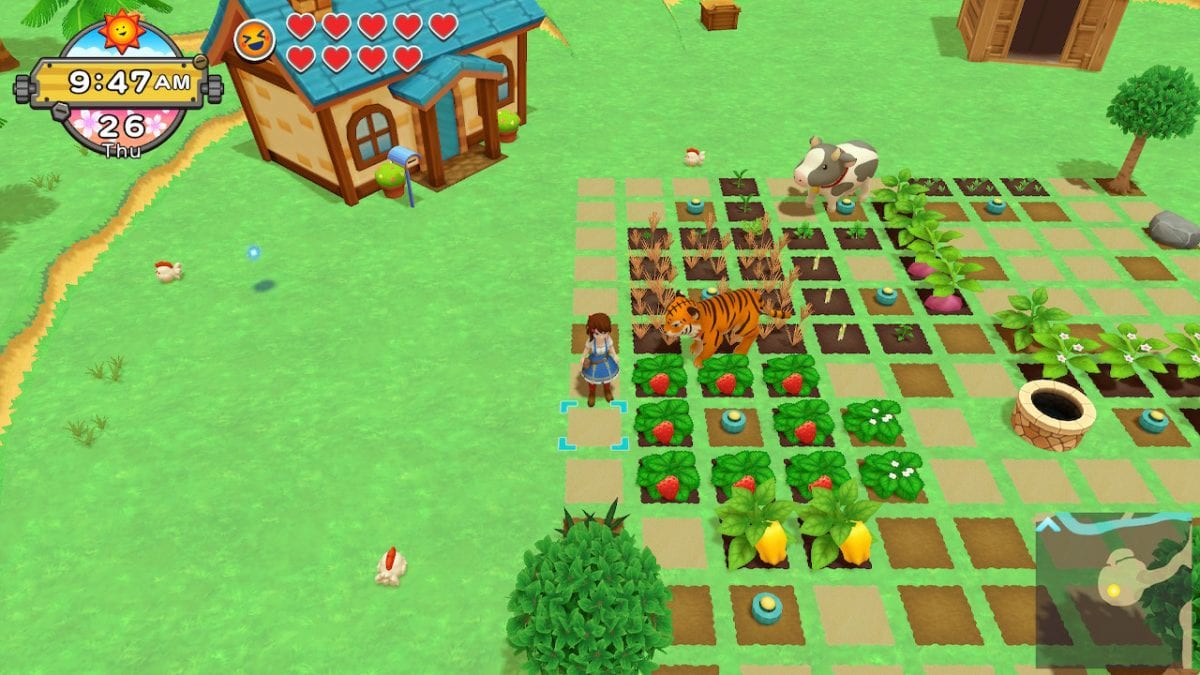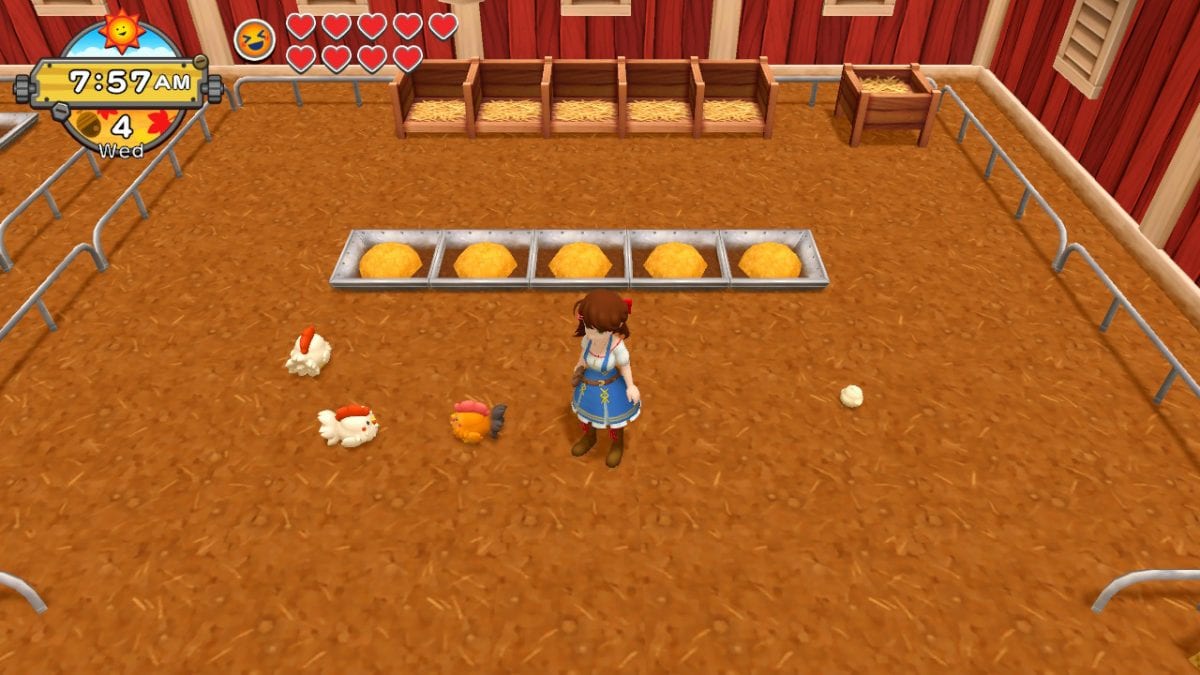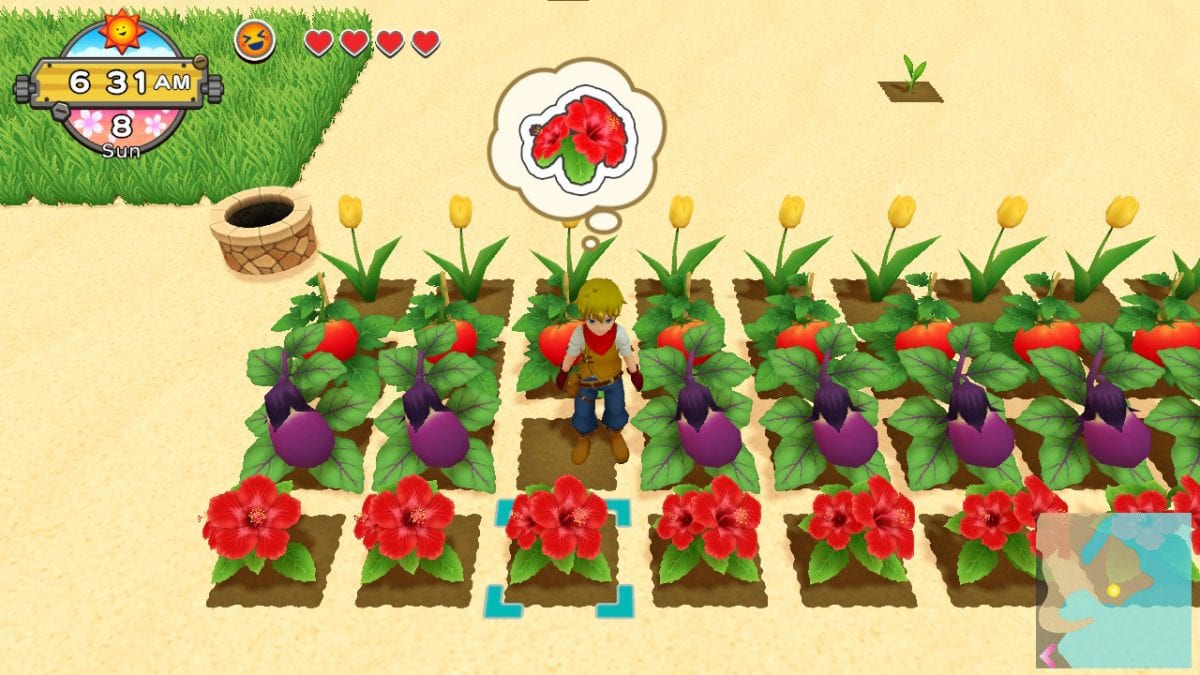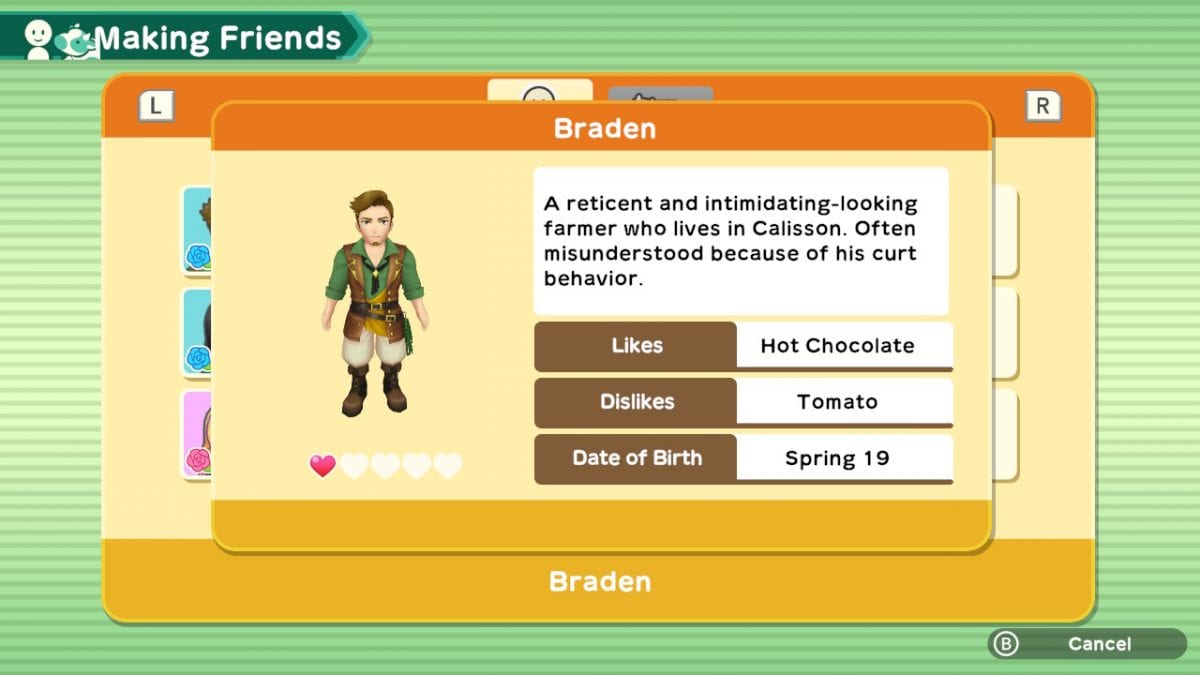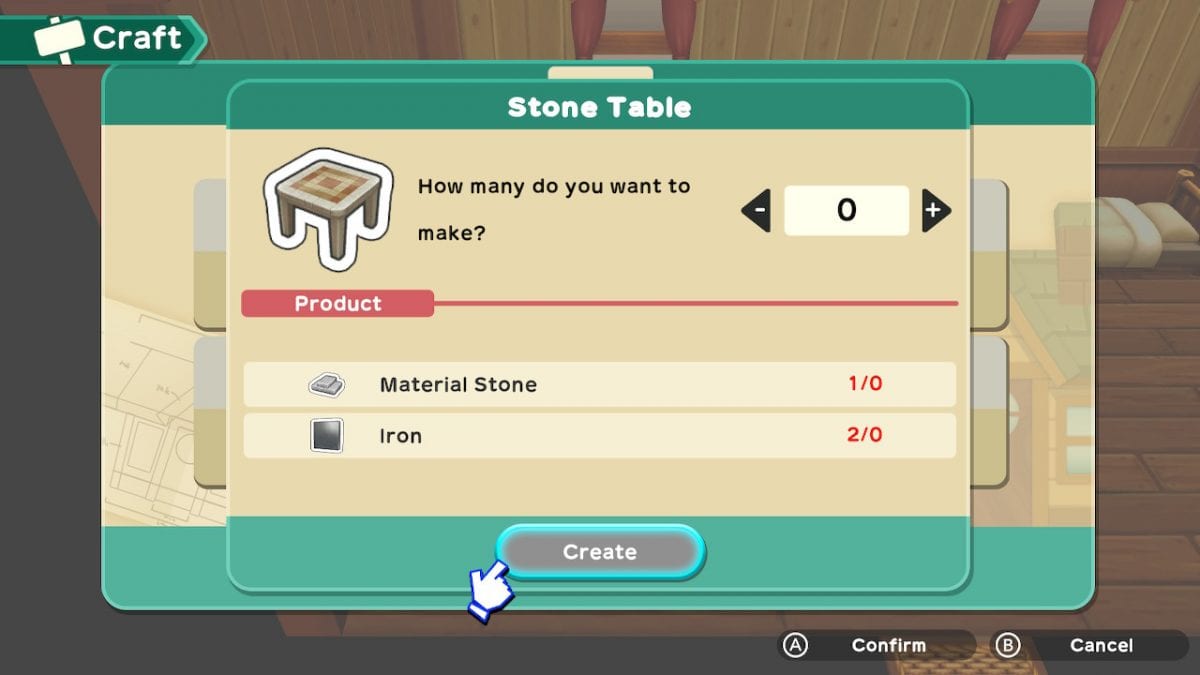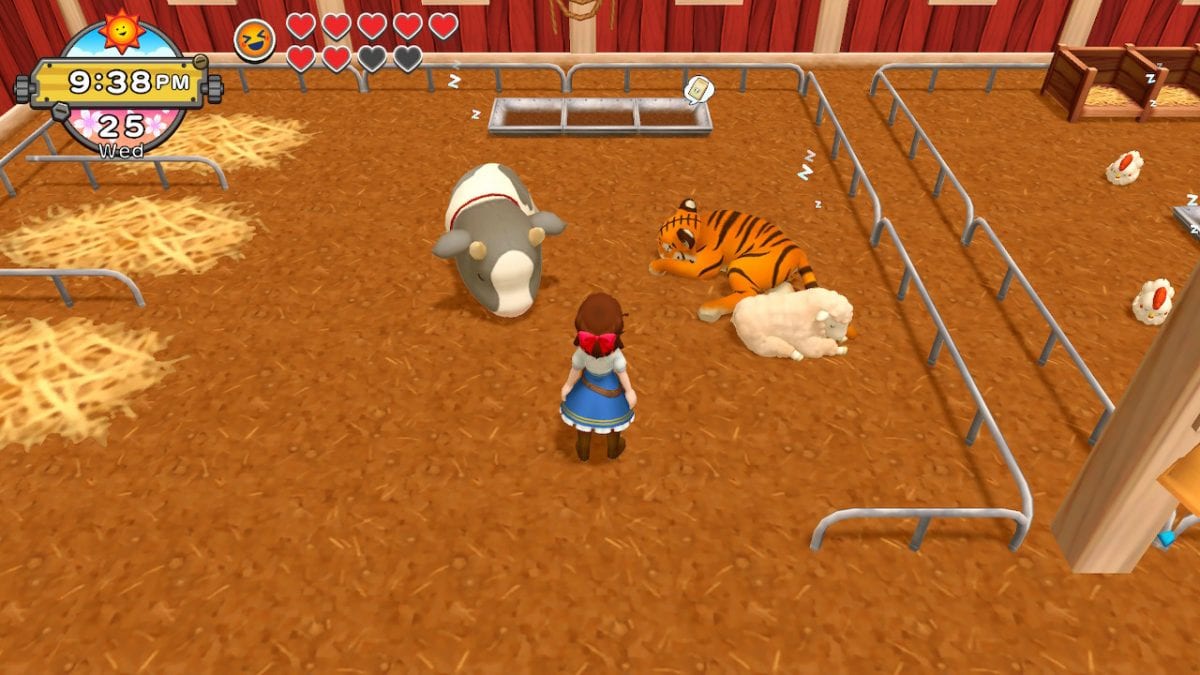I recently had the chance to sit in on a demo of Harvest Moon: One World in action to see how it takes the franchise in new directions.
In less than a month, gamers will once again be able to dive into an all new Harvest Moon game. It’s been a little bit since we’ve had a new entry to the franchise to enjoy. I know we got the multiplayer game, Mad Dash, in 2019 and it was a fun, new take on the beloved farm game. It’s distinctive gameplay changes, however, didn’t scratch the same itch.
As such, long time fans of the series have been waiting since 2017 (Light of Hope) for a full fledged Harvest Moon title. Personally speaking, Harvest Moon has been one of my favorite “guilty pleasure” gaming franchises. It’s so drastically different from other titles that I play (most action/adventure), but I find myself coming back to them time and time again.
Much like watching old Bob Ross episodes online, there’s something oddly captivating and cathartic in playing a Harvest Moon title. A factor that makes them incredibly hard to put down once you get started. Because of this, I jumped at the chance to sit in on a demo of the game.
Obviously, things are different in this era, and we were unable to get any actual hands-on time with the game as we normally would in such previews. Even so, I was able to feast my eyes on a lengthy demo, played/presented by some of the main people handling the game at Natsume: Graham Markay (Vice President of Operations), Taka Maekawa (Producer), and Adam Fitch (Localization Editor).
While it would have been nice to get my hands on the controls to feel out One World‘s new approach, what I saw gave an excellent taste of the new story, gameplay, and surprises fans have in store.
Story and Setting
In pretty much all Harvest Moon titles there is a central “story” that helps propel players through the various aspects of the game. One World is no different, and in fact seems to take steps to make the story feel like a more prominent part of the game than ever before.
From the game’s initial announcement it was clear the story of the world has an important influence on the way you play the game. As usual, you’ll play as a newcomer to the area, but players will finally have the chance to customize their character to their hearts’ content. From eyes, hair color, and even skin color, you’ll be able to make your farmer look how you want.
This time around, players find themselves dropped into a world without fruits or vegetables! While plenty of kids around the world would be jumping for joy at the idea, this is obviously a big problem. Turns out, the revered Harvest Goddess (queen of the crops) has inexplicably vanished, taking her farming knowledge with her.
Thankfully, for you, the Harvest Goddess left entities known as Harvest Wisps about the land; giving them the knowledge of seeds. So unlike previous Harvest Moon games, you won’t be able to head to the local store purchase your next bumper crop. Instead, you’ll have to track down these Wisps and gain the knowledge they contain.
Finding these wisps forms an important aspect of the game and world itself. They can be crafty and difficult to find, forcing you to explore your surroundings like never before. This is the other major change to the series.
Where the Harvest Moon games normally featured big areas to move around you were still, essentially, confined to a single town. In One World, you have multiple towns, each with their own people, quests, and climates. These are:
Calisson – a grassland area
Halo Halo – a beach/Summer locale
Pastilla – a scorching desert
Lebkuchen – a hill-town with an Autumn vibe
Salmiakki – filled with snowy mountains
This also means there are multiple mines for players to dive into as well. Instead of having a singular mine where everything is located, you’ll have to discover them all to get the resources you need.
The developers were quick to note that this is definitely the biggest Harvest Moon world around. They mentioned that in the localization phase, they worked hard to give each village a distinctive feel, even down to ensuring the townspeople you speak with utilize different speech patterns/mannerisms.
Packing it Up
In order to learn more about the Harvest Goddess and find a way to return her, you’ll have to complete quests all over the world. If it hasn’t become clear, the big focus of the game is on “exploration.” To achieve that bigger goal there have, understandably, been some gameplay tweaks.
By and large the core elements of the game remain true to the Harvest Moon franchise. Long time players will find plenty of familiar things to make them feel right at home and hanging out with an old friend. You’ll still be tending your crops, selling them to make gold, taming animals and using them to help make your farm thrive. You’ll still do your best to befriend the citizens of the town with options to become MORE than friends with a few of them.
From the gameplay I saw, it looked very much like the kind of Harvest Moon game we’ve all come to expect and have been wanting to see return for a number of years. The changes shown, however, look to take those core elements and expand them in new ways that make them feel fresh.
One of the biggest changes is the ability to move your farm. Yes, you’re no longer confined to a singular plot of land. In fact, you’re strongly encouraged to move your farm to any of the various locations you’ll encounter around the land. It’s a relatively quick process (one that reminds me strongly of the Capsules from Dragon Ball Z) that allows you to bring your home on your adventures.
This is important as the larger world means it would be far more difficult to travel out to these farther reaches, only to have to rush back to the farm to craft items or cook something. Even with the introduction of Quick Travel (yussssssss) that constant backtracking would get tedious.
Say you found a mine in the village of Lebkuchen that you really want to take some time (or in-game days) to fully explore. Moving your farm into that town gives you the ease of exploring without having to backtrack to your “home town” every night to rest up, feed your animals, etc.
Bring In The Harvest
Don’t worry, the crops you’ve planted will stay in place. It’s only your farm that gets packed up. This means you can create a bunch of little farmlands all over the map, increasing your profit potential, and being able to work on developing those all important crop mutations…
Yep, mutations are back and as important as ever. Sometimes you’ll need specific crop mutations (like an Ice Tomato) to complete quests or even just expand your encyclopedia. That will come in handy as it offers a glimpse at crop “branches” showing you if there are any possible mutations to discover, and how many there are to acquire.
As in the past, different mutations require a different set of circumstances to be triggered. This is where traveling the world and being able to develop multiple growing fields becomes useful. Because each town features it’s own stable climate, you’ll be able to grow crops for pretty much any season all at the same time. Playing around with planting the same seed across different climates will produce some of those mutations you need.
Again, it’s not a big change from the core gameplay we know, but it certainly feels like an expansion of the idea, allowing players more freedom to play how they want to than ever before. Based on the gameplay I was able to see, this seems to be the driving concept behind the development of Harvest Moon: One World. They want the game to be accessible, while giving those familiar elements more depth.
More and Less
Another way this concept comes into play is the changes to the all important “stamina gauge,” symbolized by some Zelda-esque hearts on the screen. It’s a simple gameplay system which has been part of the franchise—and all farming sims—from the start. As you complete tasks around the farm (clearing out weeds, watering crops, and just about everything else), your stamina will decrease. Once it’s out, you can still do tasks, but to your detriment. Work too hard and you’ll end up passing out, costing you time and money in the game.
There are a few ways to replenish your stamina, but the primary thing players have to do is “go to bed” every night. Of course as you make progress in the game you are able expand your stamina in order to be able to do more in your day. It’s an important part of the sim, as it’s another thing you have to keep an eye on and manage. At the start, however, it can feel frustrating in its limitations.
Because so much of the focus this time around is on exploration, the developers emphasized that the stamina gauge is more forgiving in One World. Since some of the animals and Harvest Wisps you’ll want to find only come out late at night, this is definitely a good thing. Stamina is still something you’ll have to keep a close eye on, however, as your on-screen character will have different reactions to the places you visit.
In one example, they took us to the snowswept area of Salmiakki. The colder temperatures of the area has an impact on our stamina level, depleting it quicker as our body struggled to perform the same tasks. Thankfully, there are items you can eat/drink to counter these effects (Hot Chocolate was the choice this time around). It’s small stuff, but helps sell this idea of exploring a world that feels fleshed out and lived in.
There are a handful of other minor tweaks, not all of which we were able to see. There are a number of new animals to interact with and tame (even some fantastical creatures to be on the lookout for), the fishing engine has been changed to give it a more “arcade feel,” and dropped items don’t disappear overnight so you can come back to things later.
Overall Impressions
While I wasn’t able to play One World myself, I definitely enjoyed the demo we were shown. While I hope the world itself is a little more populated than some of the areas we saw (or perhaps all the villagers were out doing chores and we didn’t come across them), I love the potential shown.
It still feels like a Harvest Moon game in all the important ways. In expanding some of those core mechanics, it feels like it opens up new ways to play that will appeal to both long-time fans of the franchise and newcomers alike.
I was generally interested in picking up One World before, though that was just because I enjoy Harvest Moon. After talking with the people at Natsume and seeing them play it, I find myself more eager than ever to actually get my hands on it. Hell, I’ve already started to plotting out my crops and layout in my mind!
Harvest Moon: One World is set to hit PlayStation 4 (PS5 via backwards compatibility) and Nintendo Switch on March 2nd. And don’t worry, it WILL be coming to the Xbox consoles as well at some point. In fact, the demo we were shown was running on the Xbox One version of the game.

